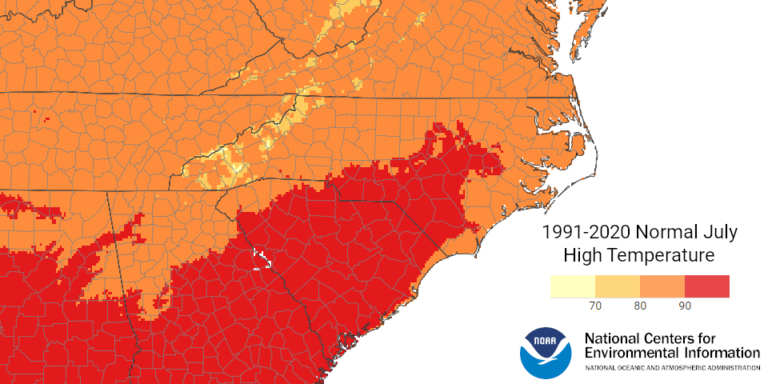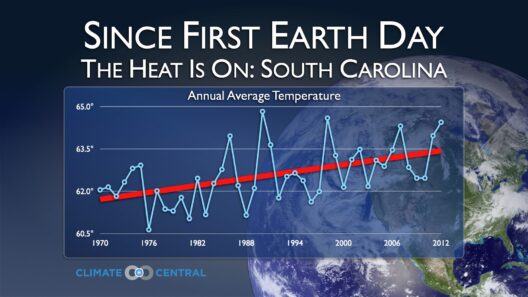North Carolina’s climate is as diverse as its topography, displaying a rich tapestry of weather patterns influenced by both the Atlantic Ocean and the Appalachian Mountains. This unique geographical positioning creates distinct climatic zones: the coastal regions bask in milder maritime influences, while the inland and mountainous areas experience more continental and variable weather. Understanding this multifaceted climate is crucial for residents, tourists, and policymakers alike, as it impacts agriculture, tourism, and environmental conservation efforts.
To comprehend North Carolina’s climate, one must first consider its climatic classification. The state primarily falls under the humid subtropical climate category, characterized by hot, humid summers and mild winters. However, as you move from the coastal plains to the mountainous regions, the climate transitions to a more temperate feel. The coastal areas resonate with gentle sea breezes and moderate temperatures, while the western mountainous regions are known for their cooler air and potential for winter snowfall.
The coastal climate, influenced heavily by the Atlantic Ocean, is defined by its relatively stable temperatures throughout the year. Summers are typically warm, with average high temperatures ranging between the upper 80s°F and low 90s°F. Winter, on the other hand, provides some respite with milder conditions, where temperatures rarely drop below freezing. Humidity levels can be quite high during summer months, making it feel even warmer. The balmy climate supports a burgeoning tourism sector, attracting visitors to its pristine beaches and recreational activities.
Precipitation patterns along the coast are also notable. North Carolina experiences a fairly consistent distribution of rainfall throughout the year, averaging around 40 to 60 inches annually. Summer months are punctuated by thunderstorms, often accompanied by the risk of tropical storms and hurricanes, especially during the Atlantic hurricane season from June to November. These severe weather events can lead to significant impacts on coastal ecosystems and infrastructure, prompting robust emergency preparedness and response measures.
As one ventures inland, the climatic characteristics begin to shift. The central Piedmont region presents a blend of both coastal and mountain influences. Summers remain hot, but winters become noticeably cooler, with occasional frost. The average snowfall in the Piedmont is less than that of the mountains but can still lead to disruptively icy conditions. Agriculture thrives in this region, thanks to fertile soils and a suitable growing climate for a variety of crops, including tobacco, soybeans, and various fruits.
The Appalachian Mountains represent the crux of North Carolina’s climatic diversity. As one ascends in elevation, temperatures drop markedly. In the higher elevations, typical summer temperatures can be significantly cooler compared to the lowlands, while winters can deliver heavy snowfall, prompting various winter recreational activities such as skiing and snowboarding. This climatic variation also supports a unique array of flora and fauna, adapting to cooler conditions and altering ecosystems dramatically from the lowlands to the peaks.
When examining North Carolina’s climatic variability, one cannot overlook the impact of climate change. Rising temperatures and shifting precipitation patterns pose challenges to both coastal and mountainous regions. Coastal areas are increasingly vulnerable to sea level rise, leading to saltwater intrusion that threatens freshwater sources and coastal ecosystems. Furthermore, changing temperatures and precipitation patterns can affect agricultural productivity, resulting in economic ramifications and food security concerns.
Residents of North Carolina also face challenges with extreme weather events, such as hurricanes and heavy rainfall. The implications of these weather phenomena extend far beyond immediate impacts on property and lifestyle; they have profound effects on the environment. Flooding can reshape landscapes, eroding soil and damaging infrastructure while causing long-lasting ecological disruption.
However, awareness and adaptation efforts are gaining momentum across the state. Many communities are working to mitigate climate change impacts through innovative solutions, such as constructing resilient infrastructures, restoring coastal wetlands, and promoting sustainable agricultural practices. Initiatives focused on reducing greenhouse gas emissions and investing in renewable energy sources are critical components of North Carolina’s commitment toward a robust climate response.
Moreover, education plays a pivotal role in promoting environmental stewardship among future generations. Schools, universities, and conservation organizations are increasingly incorporating climate science and environmental education into their curricula. Such initiatives empower students and residents to become informed advocates for sustainable practices that can help mitigate adverse climate impacts.
In conclusion, North Carolina offers a kaleidoscope of climatic experiences shaped by its diverse landscapes. From the temperate coastal breezes to the invigorating mountain air, each region’s climate presents unique challenges and opportunities. Understanding the variables of North Carolina’s climate is essential for fostering a culture of awareness and advocacy that can address the pressing issues brought forth by climate change. As the state continues to evolve and adapt, collective efforts aimed at sustainability and resilience will be paramount in ensuring that future generations can thrive amidst a changing climate.








